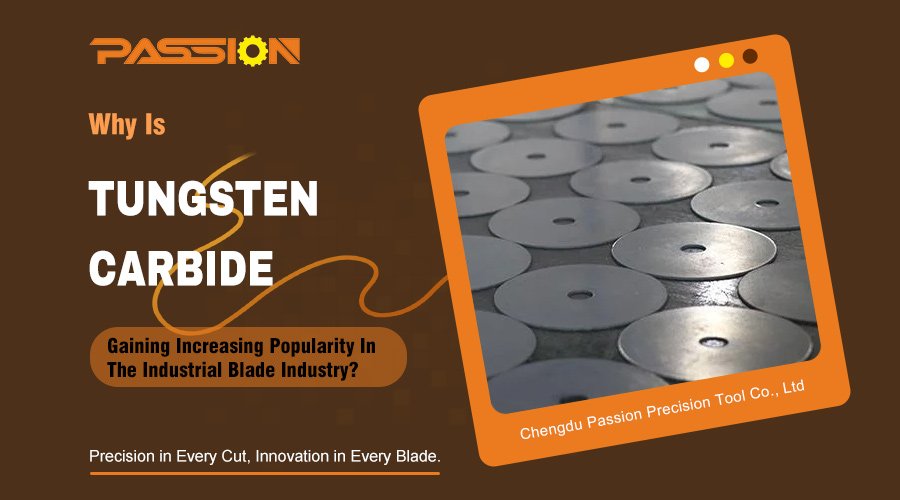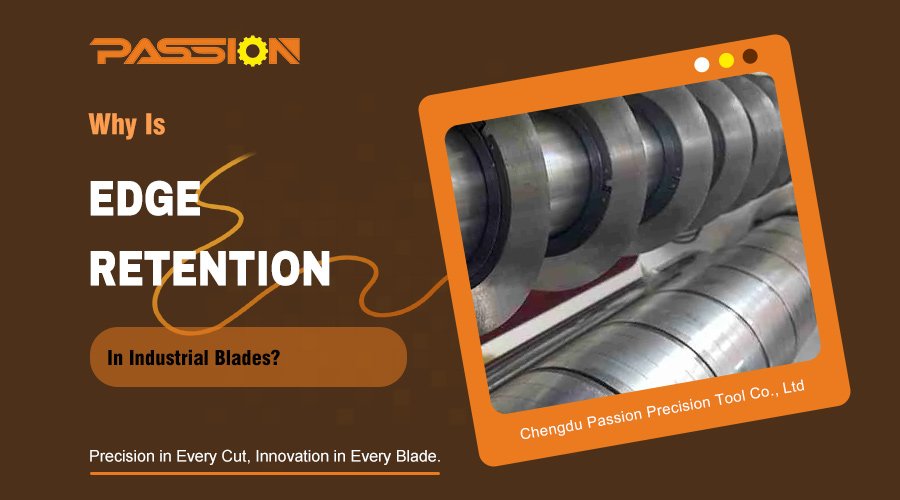In the design and manufacturing process of industrial blades, drawing parameters are the bridge between design, processing and use. A complete, standardized blade drawing not only accurately conveys the geometric information of the blade, but also ensures the reliability of subsequent production processing, assembly and application. For buyers, design engineers and production personnel, a thorough understanding of the parameters on blade drawings is key to ensuring product performance and longevity.
However, many people in the face of blade drawings, often only focus on the external dimensions, but ignored the edge angle, tolerance and precision, surface treatment and other “hidden” in the details of the key parameters. In fact, it is these details determine whether the blade is sharp and durable, whether it can be installed smoothly, whether it can maintain stability in high-speed operation. It can be said that a blade drawing is a “performance manual”, only to really understand, in order to do in the procurement and application of the heart.
This article will be from the external dimensions, edge parameters, mounting holes, geometric contours, tolerances, precision, surface treatment and marking information and other aspects of a systematic introduction to the common parameters of industrial blade drawings, to help you quickly establish a complete understanding of the framework.
Overall Dimensions
The external dimensions of industrial blades are the most intuitive and basic design indexes, as well as the most common labeling content in drawings. The dimensions not only affect the suitability of the blade and equipment, but also determine whether the blade can play the best effect in the cutting process. Whether it is a straight blade, a round blade, or a special customized blade, the accuracy of the dimensions is a prerequisite for design and manufacturing.
- Length (L): The overall length of the blade, which determines how well the blade fits on the machine.
- Width (W): The total width of the blade, which affects the stability of the blade and the cutting width.
- Thickness (T): Thickness parameter of the blade, which relates to the strength and rigidity of the blade.
- Outer Diameter and Inner Diameter (for circular blades): Round blades must be labeled with Outer Diameter and Inner Diameter to ensure fit and cutting dimensional accuracy.

Edge Parameters
The edge is the “soul” of the blade, and almost all cutting performance is closely related to the edge design. Sharpness, wear resistance, cutting resistance and the quality of the cutting surface of the workpiece are all determined by the edge parameters. Different edge designs can be adapted to different materials and working conditions, so in blade drawings, edge-related parameters often occupy an important space.
- Cutting Edge Length: The length of the effective cutting part of the blade.
- Edge Width: The width of the edge band, which affects the sharpness and strength of the blade.
- Edge Angle: The angle of intersection of the two cutting edges, which determines the sharpness and durability of the cutting edge.
- Rake Angle: The angle between the cutting edge and the vertical direction. A large rake angle is sharp, but the strength decreases.
- Relief Angle: The angle between the back of the blade and the surface of the workpiece, a reasonable back angle can reduce friction and heat.
- Chamfer / Honing: A minor trimming of the edge to increase the strength of the edge and prevent chipping.
- Edge Shape: Including Straight, Wavy, Toothed, etc., adapting to different materials and cutting methods.

Hole Position And Mounting Parameters
Blades are not only designed for cutting performance, they must also be securely and precisely mounted on the machine. The holes and mounting parameters are the interface between the blade and the machine, which directly determines the safe and efficient operation of the blade. The size, location, and shape of the mounting holes vary with different equipment and blade types, so the hole parameters in the drawings are the basis that must be strictly followed during production and assembly.
- Center Hole Diameter Bore Diameter (d): The diameter of the mounting center hole is an important parameter for circular knives.
- Bore Position: The coordinates of the center hole relative to the edge of the blade, which affects the mounting accuracy.
- Number and Distribution of Mounting Holes: Ensures that the blade is fixed securely.
- Hole Type: Common types include round holes, oblong holes, countersunk holes, and keyway slots.
- Positioning Pin Holes: Improve the positioning accuracy of the blade to avoid rotation or offset.

Profile Geometry Of Blades
In addition to the basic length, width and thickness, the geometry of a blade often determines its function and suitability. Blade profiles are designed to be adapted to different machines, materials and processes, and sometimes require special curvature, chamfers or notches to meet specific cutting requirements. The labeling of geometric profile parameters not only ensures that the appearance of the blade matches the process, but also affects its stability and life in operation to a certain extent.
- Profile Shape: Rectangular, round, curved or customized special profiles.
- Radius of Curvature (R): The radius of the arc at the end of the blade or at the edge transition, which affects the smoothness of the cut.
- Chamfer Size: The height and angle of the edge chamfer to enhance safety and durability.
- Notches: Necessary for specific cutting processes or positioning.

Tolerance And Precision Requirements (TPR)
In the production of industrial blades, dimensional accuracy is central to performance. Even small geometric errors can lead to unstable cutting, increased equipment wear, or reduced quality of the finished product. As a result, tolerances and accuracies are strictly labeled in blade drawings, which represent the manufacturer’s process capability and product quality assurance. High-end industries such as tobacco, electronic film, and medical consumables processing are particularly demanding in terms of precision.
- Dimensional Tolerances: Such as ±0.01 mm, reflecting the level of blade dimensional control.
- Flatness: Ensure that the surface of the blade is flat enough to avoid cutting deviations.
- Parallelism: The range of error between two parallel surfaces to ensure cutting symmetry.
- Perpendicularity: The perpendicularity between the blade side and the edge.
- Runout: deviation of the blade during rotation, especially critical for round blades.
Surface & Heat Treatment Parameters
The performance of a blade is not only determined by its shape and size, but also by its surface and heat treatment. Surface roughness affects friction and cutting smoothness, while heat treatment and coatings directly determine the hardness, wear resistance and service life of the blade. Different materials and different working conditions require different treatments, so these parameters are often the main focus of users when selecting inserts.
- Surface Roughness (Ra): Measured in microns, affects friction and cutting smoothness.
- Hardness (HRC or HV): The hardness index obtained through heat treatment, which directly determines the wear resistance.
- Coating Type: Such as TiN, TiAlN, CrN, to enhance the wear resistance and heat resistance of the blade.
- Heat Treatment Method: Including quenching, tempering, carburizing, nitriding, etc. to improve the toughness and strength of the blade.
Marking & Identification Information
In modern industrial production, product traceability is becoming increasingly important. Blades, as highly consumable components, often need to be tracked and managed during mass production and use. Marking & Identification information helps users to quickly identify model numbers, trace production batches, confirm material specifications and differentiate between products from different manufacturers. This information is not only part of quality assurance, but also reflects the standardization of production management.
- Part Number: Used to quickly identify blade models.
- Batch Number: Ensures traceability of the production process.
- Blade Material Specification: Specifies the material used for the blade.
- Manufacturer’s Mark: Reflects the brand and quality assurance.

Particular Attention: Differences In Completeness Of Drawing Content
It is important to note that not all of the parameters described above necessarily appear in a single blade drawing. In practice, the complexity of the drawing will vary depending on the structure and use of the blade. For relatively simple structure of the blade, the drawing often only need to indicate the shape and basic dimensions can be, such information is sufficient to guide the processing and use. But when it comes to high-precision, complex processes or special-purpose blades, more information such as edge angles, tolerances, surface treatments and mounting holes will be labeled in the drawings. In other words, the level of detail on the drawing depends on the complexity of the blade and the customer’s application requirements.
Every parameter of the industrial blade drawing is a guarantee of the performance and reliability of the blade. Dimensions determine the installation and fit, edge parameters directly affect the cutting effect, hole position and installation to ensure stable operation of the blade, geometric profile, tolerance accuracy is related to the final cutting accuracy and consistency, while the surface treatment and heat treatment determines the upper limit of blade life and performance. Through a comprehensive understanding and mastery of these drawing parameters, not only can help users better selection and procurement, but also for manufacturers and designers to provide a clearer basis for communication.
Industrial blades may be small, but they are fully parameterized and precisely designed, and every detail is related to efficiency and quality.






